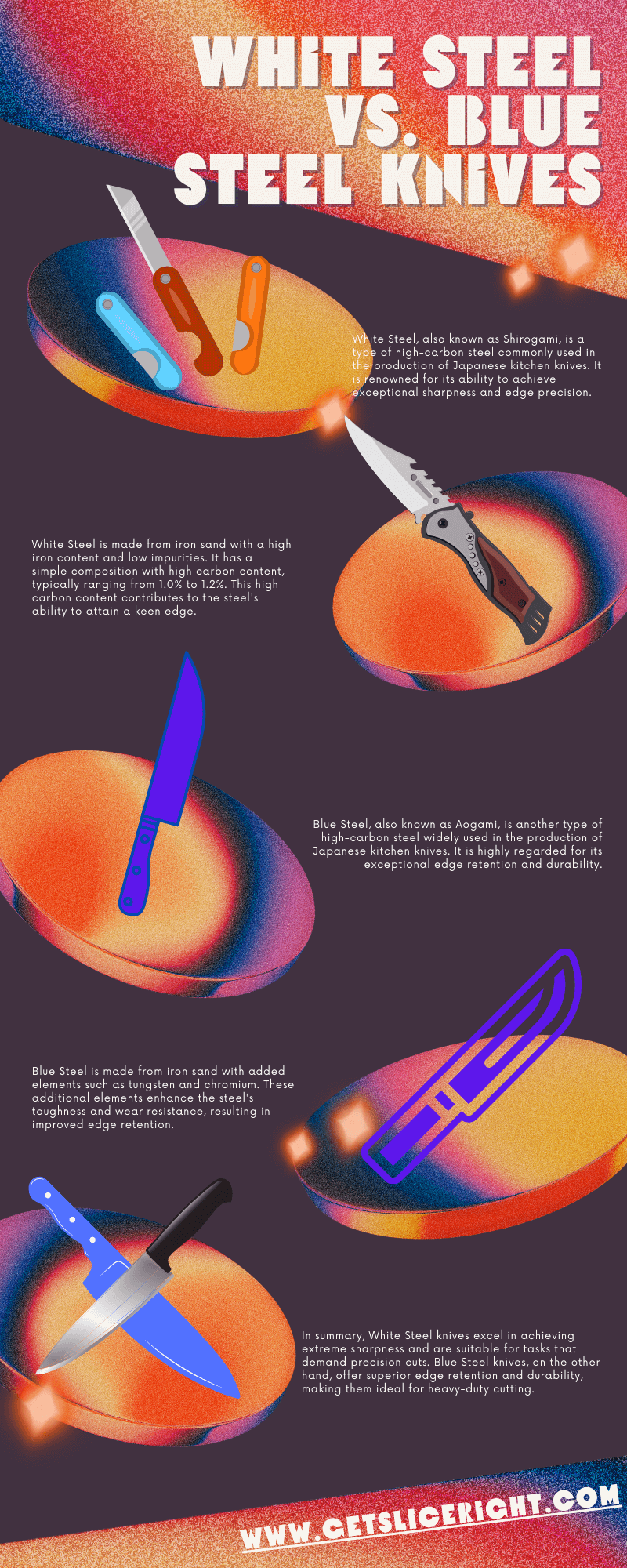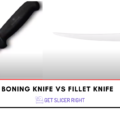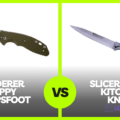White steel and blue steel are knives used for various kitchen tasks, from slicing and dicing to cutting up food. White steel is made from high-carbon, alloyed steel that has been annealed and tempered. This gives it a hardness rating of 63 on the Rockwell C scale and makes it excellent for tasks where a sharp edge is needed. On the other hand, blue steel is made from low-carbon steel with an additional element of molybdenum. Although both offer their own advantages and drawbacks, some may be more suitable for certain tasks than others.
White Steel Knives
White steel knives are made of carbon, chromium, and molybdenum alloy. This combination makes them strong and durable yet surprisingly light. They tend to be hardier than blue steel and can hold an edge for longer periods of time. However, they are prone to rusting and must be sharpened more frequently than blue steel knives. The advantage of white steel is that it’s relatively affordable, so budget-conscious cooks can still enjoy the same cut quality as chefs using more expensive knives.
Blue Steel Knives
Blue steel knives are made of a combination of carbon, chromium, and vanadium. This combination allows the knife to remain sharper for longer periods of time and is less prone to rusting than white steel. However, it can be more expensive than white steel knives and require more frequent sharpening due to its softer nature. Blue steel knives are also heavier than their white counterparts, which may make them feel more comfortable in the hand.
White Steel vs. Blue Steel Knives
Regarding kitchen knives, two of the most popular materials used are white steel and blue steel. Both have their own unique properties that make them appealing for different purposes. Here is a comparison of the two types of steel from which you can choose when deciding on a knife:
- Sharpness: White steel is known for its sharpness and ability to stay that way for extended periods. Blue steel, on the other hand, is known to be harder than white steel and can hold its edge longer without needing sharpening as often.
- Corrosion Resistance: White steel is not resistant to corrosion or rusting, requiring a bit more maintenance. Blue steel, however, is much more resistant to corrosion and can stay rust-free for longer.
- Price: White steel knives are cheaper than blue steel knives, but the cost difference can vary depending on the brand and type of knife purchased.
- Maintenance: Both knives require regular maintenance and honing to keep them in tip-top condition. Regarding frequency, white steel knives need to be sharpened more often than blue steel knives.
- Uses: White steel is best suited for home users or those who don’t use their knives often. Blue steel is better for chefs and people in the professional culinary industry, as they are more durable and can handle more extensive use.
Advantages Of White Steel Knives
- White steel knives are made from high-carbon steel, which is more durable and can retain its edge better than other types of steel. This makes them ideal for everyday use in the kitchen.
- The harder blade makes a sharper edge that lasts longer than softer blades, meaning you won’t have to sharpen your white steel knife as often.
- The high-carbon content in the steel makes it more rust-resistant, allowing you to use it for a wide range of tasks without worrying about corrosion.
- White steel knives are also less likely to discolor when exposed to acidic foods and liquids, making them an ideal choice for those who want to avoid staining their knives.
Disadvantages Of White Steel Knives
- White steel is generally softer than blue steel, prone to chipping or denting if not properly looked after, or used with care.
- It is also more difficult to sharpen and can lose its edge quicker than a harder blue steel blade.
- White steel knives may require higher maintenance, requiring more oiling and rust-proofing to prevent corrosion.
Advantages Of Blue Steel Knives
- Blue steel knives are made from a softer alloy, resulting in a blade that is easier to sharpen and maintain with less effort.
- The blades are also more flexible than white steel, better suited for delicate tasks like slicing vegetables or fish.
- The surface of blue steel knives is rougher than white steel, which creates a better grip and helps to ensure food doesn’t stick to the knife while cutting.
- The softer alloy also makes them less likely to chip or break if dropped, making them an ideal choice for those prone to accidents.
Disadvantages Of Blue Steel Knives
- Blue steel knives are more expensive than white steel knives.
- They require more maintenance and must be sharpened more frequently than white steel knives to remain efficient.
- The hardness of blue steel makes it brittle, meaning that they are prone to breaking or cracking if not handled carefully enough.
- Blue steel blades are also more difficult to sharpen and hone than white steel, meaning that they require a higher level of skill to be able to use them properly.
- Blue steel knives can discolor with age and exposure to moisture, making them less aesthetically pleasing.
FAQs
Which knife is better for professional chefs?
Both white steel and blue steel knives are popular among professional chefs. The choice ultimately depends on personal preferences, specific tasks, and required maintenance.
Are white steel and blue steel knives dishwasher safe?
No, it’s best to hand-wash these knives to prevent damage and maintain their sharpness.
Is high-carbon steel better for knives?
It depends on the individual knife and its intended use. White steel has a lower carbon content than blue steel, which makes it softer and easier to sharpen. On the other hand, blue steel has a higher carbon content making it harder but also more brittle and prone to chipping. White steel is usually the better choice for those looking for a knife that can stand up to daily use.
Are carbon steel knives safe for food contact?
Carbon steel knives are generally safe for food contact. However, there are some considerations to keep in mind. Carbon steel is made primarily of iron and carbon and does not contain chromium or nickel, which can be toxic if exposed to food over time. As a result, carbon steel knives may corrode more easily than stainless steel blades and should be washed regularly and dried thoroughly to prevent rusting. If the knife is not cared for properly, it can introduce harmful bacteria into the food.
Conclusion

White steel and blue steel knives are popular choices for kitchen use. Both types of blades have their own advantages and disadvantages, depending on the user’s needs. White steel is a harder alloy that tends to hold an edge longer than blue steel, but it is also more brittle and prone to chipping or cracking if not cared for properly. Blue steel is softer and easier to sharpen but doesn’t hold an edge like white steel. Ultimately, deciding which type of knife to use depends on personal preference and needs. Both types are great options for any kitchen.

Mario Batali is a renowned author, food enthusiast, and passionate chef who has dedicated his life to exploring the world of culinary arts. With a love for sharing his knowledge and experiences, Mario has become a prominent figure in the food blogging community, inspiring countless readers with his creativity and expertise.
In addition to his culinary prowess, Mario Batali is also a talented writer with a flair for engaging storytelling. He launched his own food blog to share his recipes, cooking tips, and personal experiences in the kitchen. Over time, Mario’s blog gained a loyal following of food enthusiasts who appreciate his unique approach to cooking and his dedication to using only the finest ingredients.
Mario Batali’s passion for food and his commitment to sharing his knowledge with others have made him a true inspiration in the world of culinary arts. Through his blog, cookbooks, and public appearances, Mario continues to spread his love of food and the joy of cooking with his ever-growing fanbase.







